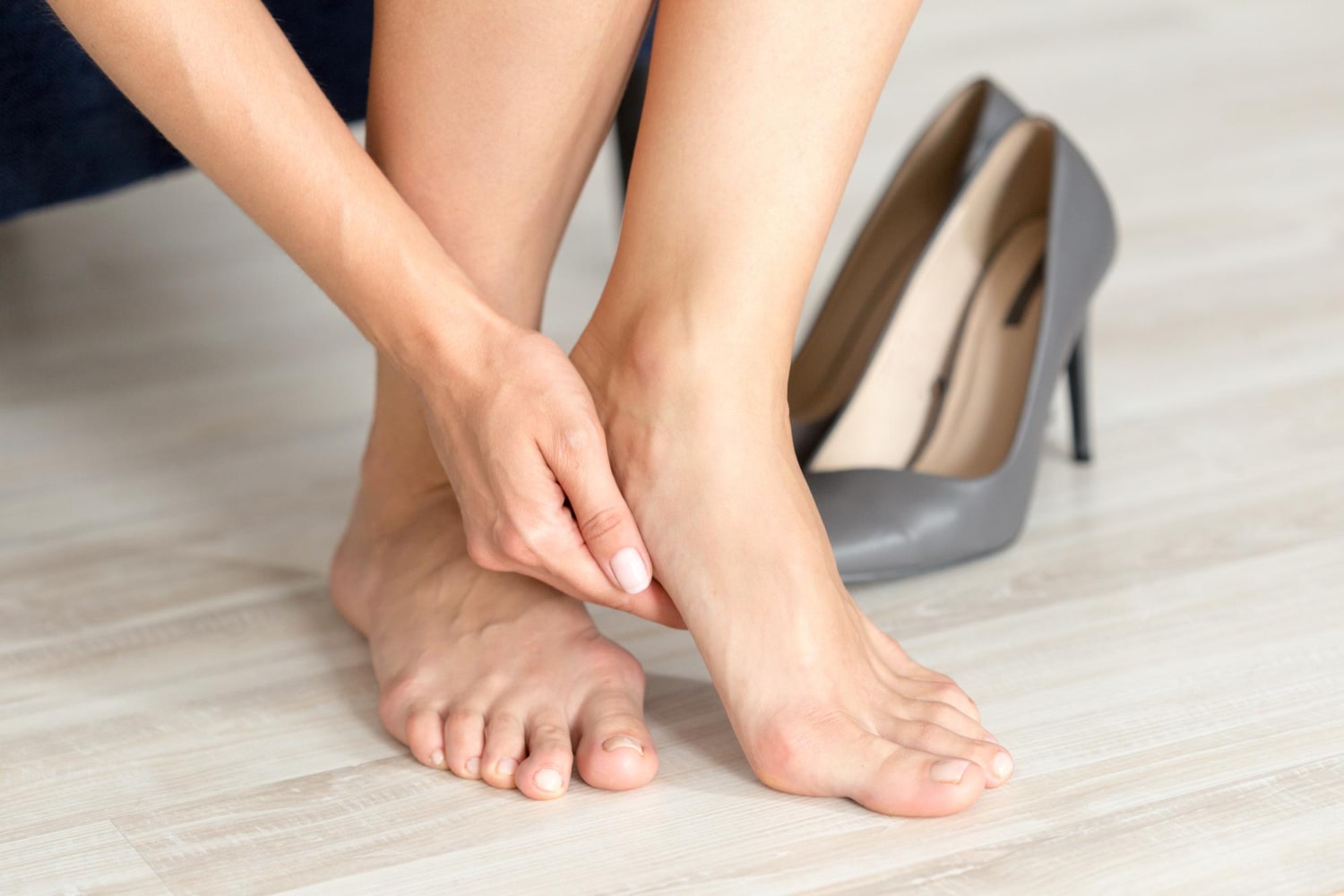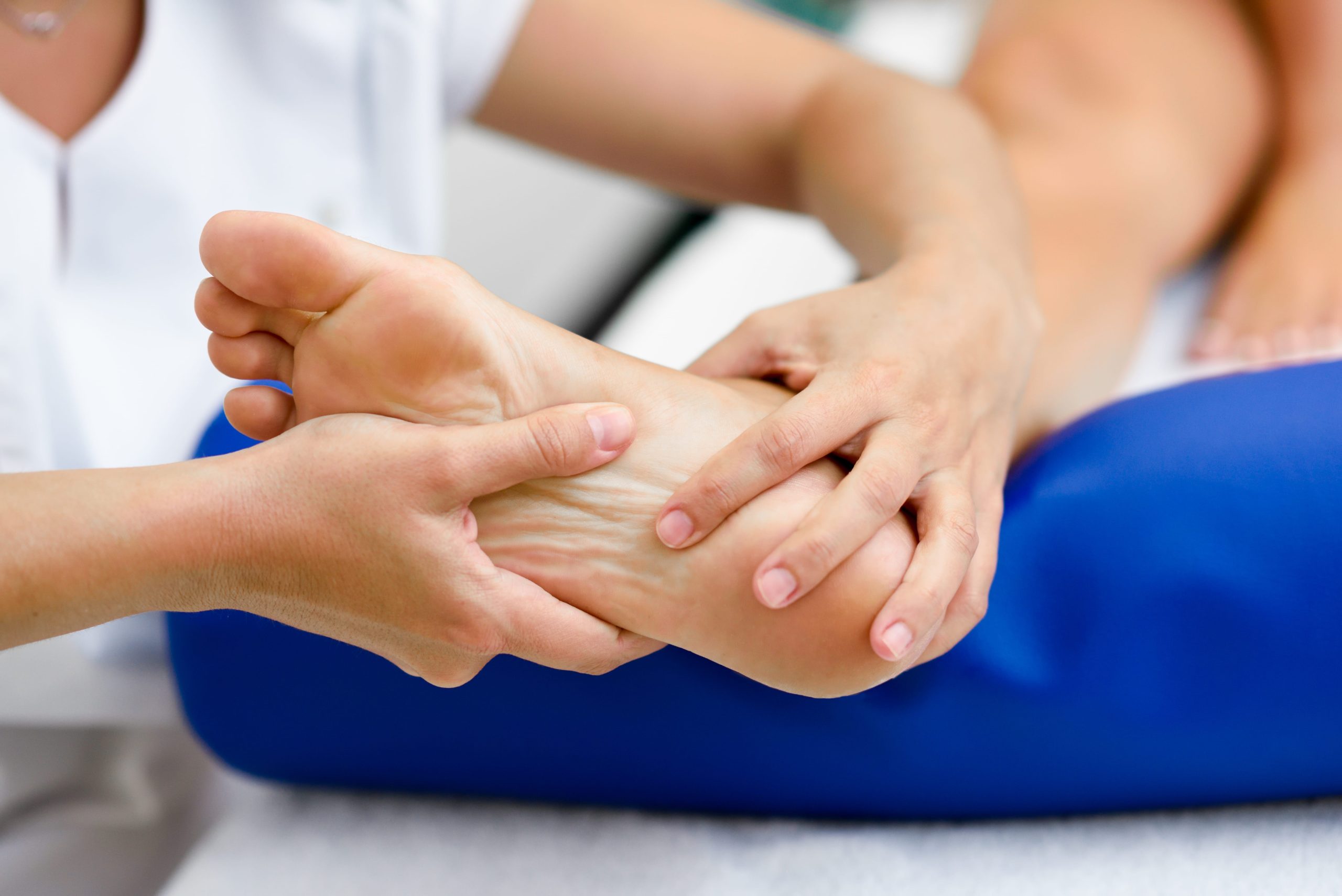Charcot Foot and Diabetes: What is It?
Charcot foot is a rare yet serious complication of diabetes-related neuropathy. This severe joint disease can lead to fractures, deformities, and amputation. Though unpleasant, the condition can be prevented and treated if addressed in the early stages.
What is Charcot Foot?
Many people living with diabetes experience neuropathy. Chronic high blood sugar damages the nerves, reducing feeling in the feet. As a result, they may be unable to detect foot injuries, such as fractures, sprains, and strains, so they continue walking on them, leading to damage and foot Charcot deformity.
People prone to the condition are also likely to develop corns, calluses, and blisters because they are not walking correctly. These foot wounds can become infected. If they are not detected early on, amputation may be necessary. The condition can even be fatal.
Fortunately, Charcot foot diabetes is rare, affecting less than 1% of diabetics.
What are Charcot Foot Syndromes?
Early symptoms of Charcot foot include:
If the condition isn’t treated early on, it could advance into the following stages of Charcot foot:
- Rocker Bottom Foot: At this stage, the bones in the center of the foot break down and collapse, destroying the arch of the foot. Some people may develop a bulge where the arch used to be.
- Changes in Toe Shape: If your arch collapses, your toes may compensate by curling inwards.
- Changes in Ankle Shape: Your ankle may also curve or bend to adjust to foot deformities.
- Foot Ulcers: Foot deformities increase the risk of foot injuries like blisters and corns. Neuropathy makes these wounds difficult to detect. If left untreated, they may become infected and develop into foot ulcers, which can also lead to amputation.
Diagnosing Charcot Foot
If you notice symptoms of Charcot foot and diabetes, such as foot pain, swelling, warmth, and discoloration, don’t hesitate to seek out medical assistance. A doctor will examine your feet, looking for changes in color and positioning. They will also determine how much feeling you have in your lower extremities.
If necessary, the doctor will then perform tests that can confirm the presence of Charcot foot, such as:
- Foot X-rays
- MRIs (magnetic resonance imaging)
- Blood tests to check for signs of infection
How to Treat Charcot Foot?
In treating Charcot foot, doctors aim for:
- Stability: The foot should be supported to prevent future deformities.
- Plantigradibility: The foot should be able to plant firmly on the floor when the individual is standing normally.
- Prevention of Ulcers: The foot should be positioned in a way that avoids further irritation from rubbing against the shoe, thereby preventing ulcers and related infections.
Charcot foot treatment varies depending on the nature of the condition. Your doctor may recommend any of the following approaches:
Nonsurgical Treatments
- Taking the Weight Off the Foot: A medical professional may advise you to take the weight off your foot until it heals. They may recommend using a cast or brace, crutches, a walker, or a wheelchair to reduce swelling, prevent bone fractures, and prevent injuries from worsening.
- Orthotics: Orthotics are shoe inserts that support the feet and toes, reducing pressure and providing stability during walking. The doctor may recommend custom inserts or an ankle brace to help the healing process.
- Physical Therapy: A physical therapist may recommend exercises that help you adjust how you walk to reduce pressure on specific areas. They will also guide movements that reduce pain and support healing.
Surgical Treatments
- Debridement of Ulcers: This procedure involves cleaning the ulcer and removing the dead skin to address the infection. A cast may be applied to protect the ulcer during healing.
- Lengthening the Calf or Achilles Tendon: The injury can cause muscles to become tight, putting pressure on the soles of the feet. The lengthening procedure reduces pressure that may lead to ulcers and further damage.
- Removal of Bony Prominences: Foot deformities can cause bones under the skin to poke through, increasing the risk of ulcers. Surgery can remove those bones and associated risks.
- Deformity Corrections: Plates, screws, and rods can be inserted to correct deformities and support healing.
- Amputation: Complications like severe deformities and infections may make a partial or complete amputation necessary. Patients will be provided with a prosthetic device to support mobility.

Prevention of Charcot Foot in Diabetes
Preventing Charcot foot due to diabetes mellitus requires a combination of a healthy lifestyle to maintain low blood sugar levels and proper foot care. Here are some recommended methods:
- Check Your Feet Regularly: Inspect your feet daily for signs of injury. Look between your toes and beneath your feet. Use a mirror if necessary.
- Maintain Blood Flow to Your Feet: Ensure circulation by keeping your feet elevated when possible and wiggling your toes often. Avoid wearing overly tight socks and shoes.
- Follow a Healthy Diet and Exercise Routine: Eat foods that keep blood sugar low, such as fruits, vegetables, and whole grains. Exercise can also help lower blood sugar levels. Additionally, the combination of a healthy diet and exercise can help maintain a low weight, preventing obesity, a leading contributor to Charcot foot.
- Proper Foot Care: Maintaining proper foot care, including trimming to prevent ingrown toenails, keeping feet dry, and wearing comfortable footwear, can help reduce the risk of injuries that may develop into Charcot foot-related ulcers.
How Feetsee Helps Detect Charcot Foot
Charcot foot can be extremely dangerous and even fatal, but it can be treated if detected in its early stages. Feetsee can be instrumental in detecting Charcot foot before it gets worse.
The device monitors foot temperature for fluctuations that may be related to Charcot foot and foot ulcers. If a spike is detected, it immediately alerts your doctor so they can begin treatment. Your healthcare provider will recommend the proper treatment techniques to keep the condition under control.
Visit our website to learn more and determine if Feetsee is right for you.
FAQs
Can you have Charcot foot without diabetes?
Yes, you can have Charcot foot without diabetes. Charcot foot is a symptom of nerve damage that often occurs in people with diabetes. However, it may also be related to nerve damage due to alcoholism, infections, spinal cord injury, and hereditary conditions.
Can diabetic foot Charcot be reversed?
Charcot foot is not technically reversible in that the initial damage to the foot cannot be reversed. However, with proper treatment, the inflammation will subside, and further deformities and damage will be prevented.
What is the long-term prognosis for Charcot foot?
A Science Direct report revealed the outcome of follow-ups on 41 patients with Charcot foot. After 8 years, their mortality rate was 29%. Sixty-seven percent of patients experienced ulceration. Fifteen patients required surgery, resulting in a total of 29 operations.
What is the Difference Between Charcot’s foot and a diabetic foot ulcer?
Charcot foot typically develops from foot injuries such as strains, sprains, and fractures, leading to deformities. Foot ulcers often develop from foot wounds, such as corns, calluses, and blisters, which can lead to infection. However, the two are related.
For example, people with Charcot’s foot often develop foot wounds because deformities make their feet more prone to irritation. Additionally, both cause inflammation and temperature increases. However, an ulcer will appear as a noticeable wound, while Charcot’s foot may be characterized by general redness in its early stages.
References:
https://diabetesjournals.org/care/article/46/12/e217/153788/Prevalence-of-Charcot-Foot-in-Subjects-With
https://link.springer.com/article/10.1007/s00125-024-06271-9
https://iwgdfguidelines.org/wp-content/uploads/2023/07/IWGDF-2023-08-Charcot-Guideline.pdf

Detect Early, Prevent Amputations
Diabetic foot ulcers (DFUs) lead to significant discomfort, pain, numerous amputations, and billions of dollars in healthcare costs each year.
